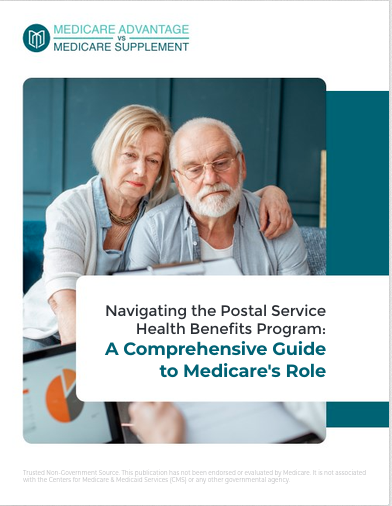Key Takeaways:
-
Medicare Advantage plans offer a bundled alternative to Original Medicare, including extra benefits beyond Part A and Part B.
-
Costs, coverage networks, and plan flexibility vary, making it crucial to compare options based on personal healthcare needs.
-
Some plans may offer additional cost-saving programs for prescriptions, telehealth, and wellness benefits.
-
Provider networks impact access to care, making it essential to review available doctors and hospitals before enrolling.
Understanding Medicare Advantage: What You Need to Know in 2025
Medicare Advantage, also known as Medicare Part C, is an alternative to Original Medicare that bundles hospital, medical, and often prescription drug coverage into one plan. These plans are offered by private insurers and regulated by Medicare, with each plan setting its own costs, coverage rules, and provider networks.
With many plans available, it’s essential to evaluate them based on coverage, costs, and provider network flexibility to determine the best fit for your healthcare needs. Whether you’re enrolling for the first time or reconsidering your current plan, here are three key things to keep in mind before making your decision.
1. Coverage: More Than Just Medicare Parts A and B
One of the biggest reasons beneficiaries choose Medicare Advantage is the additional benefits that go beyond what Original Medicare covers. While all Medicare Advantage plans must cover the same hospital (Part A) and medical (Part B) services as Original Medicare, most also include:
Prescription Drug Coverage
Many Medicare Advantage plans include Part D prescription drug coverage, eliminating the need for a separate Part D plan. However, formularies (the list of covered drugs) vary between plans, so it’s essential to check if your medications are included before enrolling. Some plans also offer lower-cost alternatives and mail-order pharmacy options, which can be a significant cost-saving feature.
Some Medicare Advantage plans also provide tiered prescription drug coverage, meaning generic medications may have a much lower out-of-pocket cost than brand-name drugs. Some plans provide preferred pharmacy pricing, meaning you’ll pay less when using designated pharmacies within the plan’s network.
Vision, Hearing, and Dental Benefits
Original Medicare doesn’t cover routine vision, hearing, or dental care, but many Medicare Advantage plans provide benefits like annual eye exams, hearing aids, and preventive dental care. If these services are important to you, be sure to review what each plan offers. Some plans even offer coverage for more advanced procedures like dentures and specialty eye care, which can be a valuable addition to your healthcare plan.
Additionally, some Medicare Advantage plans may include allowances for eyeglasses, contact lenses, hearing aids, and even telehealth-based hearing consultations. Dental benefits may also extend to procedures such as crowns and root canals, which can be costly without additional insurance.
Wellness and Fitness Programs
Some plans offer fitness memberships, wellness programs, and even coverage for alternative therapies. If staying active is part of your lifestyle, these added benefits could be a deciding factor in choosing the right plan. Many plans also include access to nutrition counseling and chronic disease management programs, which can be crucial for those managing long-term health conditions.
Some plans even include home fitness equipment or subscriptions to virtual workout platforms, helping beneficiaries maintain their fitness without having to visit a physical gym. These added benefits may contribute to overall well-being and preventative care.
Telehealth and Virtual Care
With the increasing popularity of telemedicine, many Medicare Advantage plans now offer virtual doctor visits and telehealth services. This is particularly useful for those who prefer to receive care from the comfort of their homes or have mobility challenges that make in-person visits difficult. Be sure to verify the extent of telehealth coverage before enrolling.
2. Costs: Premiums, Deductibles, and Out-of-Pocket Expenses
Medicare Advantage plans have different cost structures than Original Medicare, which is why understanding how expenses add up is crucial when comparing plans.
Monthly Premiums and Plan Costs
While Original Medicare has set costs, Medicare Advantage plans determine their own monthly premiums. These can vary based on the level of coverage and benefits provided. Some plans include additional perks but may have higher premiums, while others might offer lower premiums with higher out-of-pocket costs. Consider balancing the premium costs with anticipated medical expenses to find the right fit for your budget.
Deductibles and Copayments
Each Medicare Advantage plan sets its own deductible amount, which is the cost you must pay before your plan starts covering expenses. Plans also have copayments or coinsurance for doctor visits, hospital stays, and other services. Understanding these details will help you estimate how much you’ll be paying for healthcare throughout the year. Some plans waive deductibles for certain preventive services, making them a more attractive option for those needing regular screenings and wellness visits.
Annual Out-of-Pocket Maximums
Unlike Original Medicare, which does not have a cap on out-of-pocket expenses, Medicare Advantage plans include an annual out-of-pocket maximum. Once you reach this limit, your plan covers all in-network services for the rest of the year. This cap is particularly important for those with frequent medical needs, as it provides financial protection from excessive healthcare costs. Plans with lower out-of-pocket maximums may have higher premiums, so it’s important to consider your expected medical usage when making a decision.
Additional Cost-Saving Features
Some Medicare Advantage plans offer cost-saving benefits such as reduced copays for preferred providers, coverage for generic drugs at a lower cost, and special programs that help with chronic disease management. Additionally, some plans offer reimbursement programs for gym memberships or healthy living incentives, helping you save on wellness expenses.
3. Provider Networks and Plan Flexibility
Choosing a Medicare Advantage plan also means choosing a network of doctors, hospitals, and pharmacies. Different plans have different network structures, so it’s important to know how they affect your access to care.
HMO vs. PPO Plans
-
Health Maintenance Organization (HMO) Plans: Require you to use a specific network of doctors and hospitals, often needing referrals to see specialists. These plans typically have lower costs but less flexibility.
-
Preferred Provider Organization (PPO) Plans: Offer more flexibility, allowing you to see out-of-network providers at a higher cost but without requiring referrals. This can be an ideal option for those who need to see specialists frequently or travel often.
Medicare Advantage vs. Original Medicare + Medigap
If you value flexibility and nationwide coverage, Original Medicare combined with a Medigap (Medicare Supplement) policy might be a better option.
Speak With an Expert
Medicare can be complex, and getting expert guidance can make all the difference. Speaking with a licensed agent listed on this website can help you compare options, understand your benefits, and make an informed decision about your Medicare Advantage plan.










